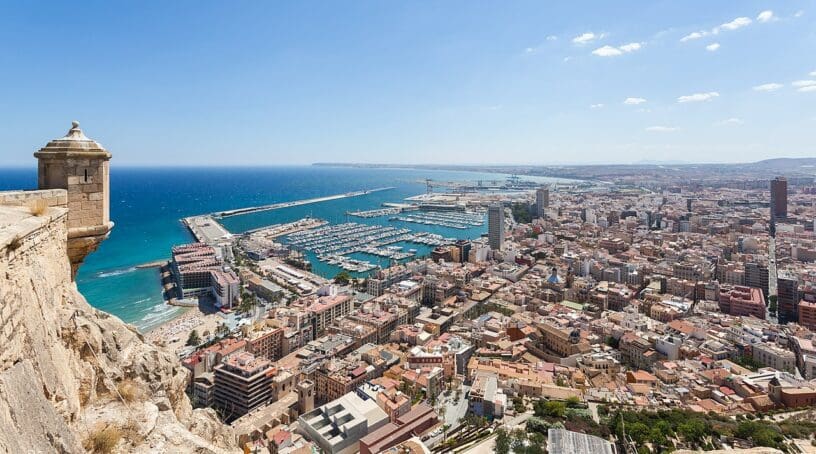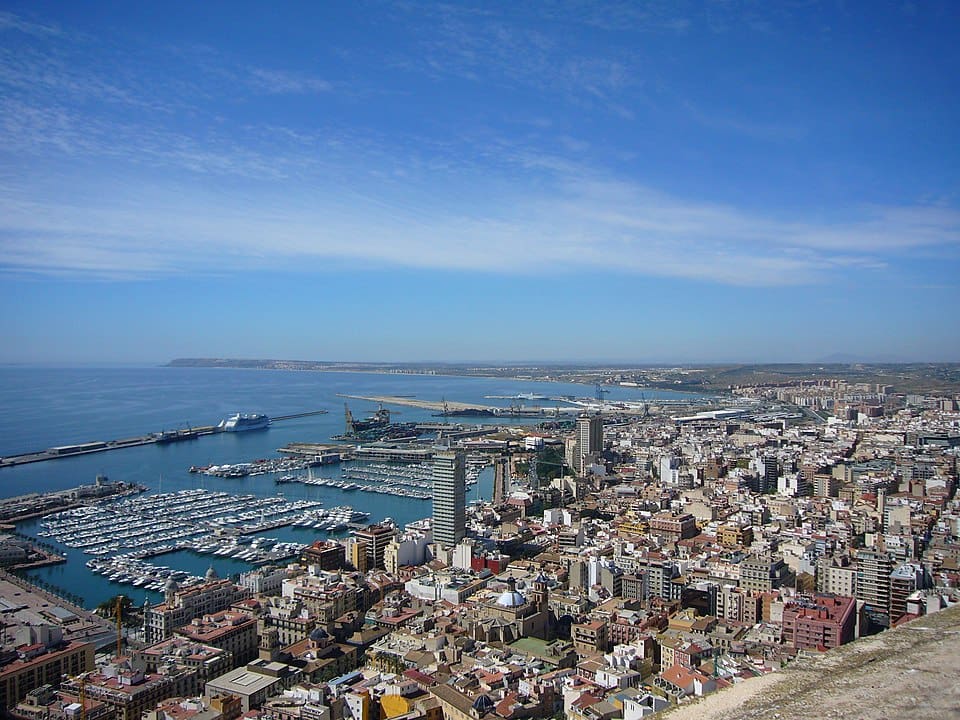Alicante: 30 Facts About This Hidden Gem on Spain’s Costa Blanca
Alicante is a hidden jewel that is tucked away along Spain’s charming Costa Blanca. It has an amazing blend of Mediterranean landscapes, history, and culture. Discover why travelers looking for a true Spanish experience have fallen in love with this energetic city: its entrancing mix of modern conveniences and old-world charm.
Alicante has an average of 3,000 hours of sunlight a year, making it a refuge for sunseekers with its sun-kissed beaches and mild climate. The city is rich in history, with Roman origins that can be seen in archaeological finds like the Santa Barbara Castle, which is majestically positioned atop Mount Benacantil.
Beyond its historical attractions, Alicante comes alive with activity along the bustling Explanada de España, a promenade lined with palm trees and ideal for strolls. Savor the cuisine of the region; Alicante is known for its mouthwatering seafood dishes and its iconic paella.
Beyond being a haven for beach lovers, the city is also home to a thriving arts and culture sector, highlighted by the recognizable Casa Carbonell and the Contemporary Art Museum of Alicante (MACA). Alicante presents itself as a fascinating location, beckoning you to discover its mysteries one fact at a time. Whether you’re strolling through the Barrio Santa Cruz, with its winding cobblestone alleyways, or taking in the expansive views from the Santa Barbara Castle,
Here are 30 facts about this hidden gem on Spain’s Costa Blanca:
1. Alicante is Located on Spain’s Picturesque Costa Blanca Coastline
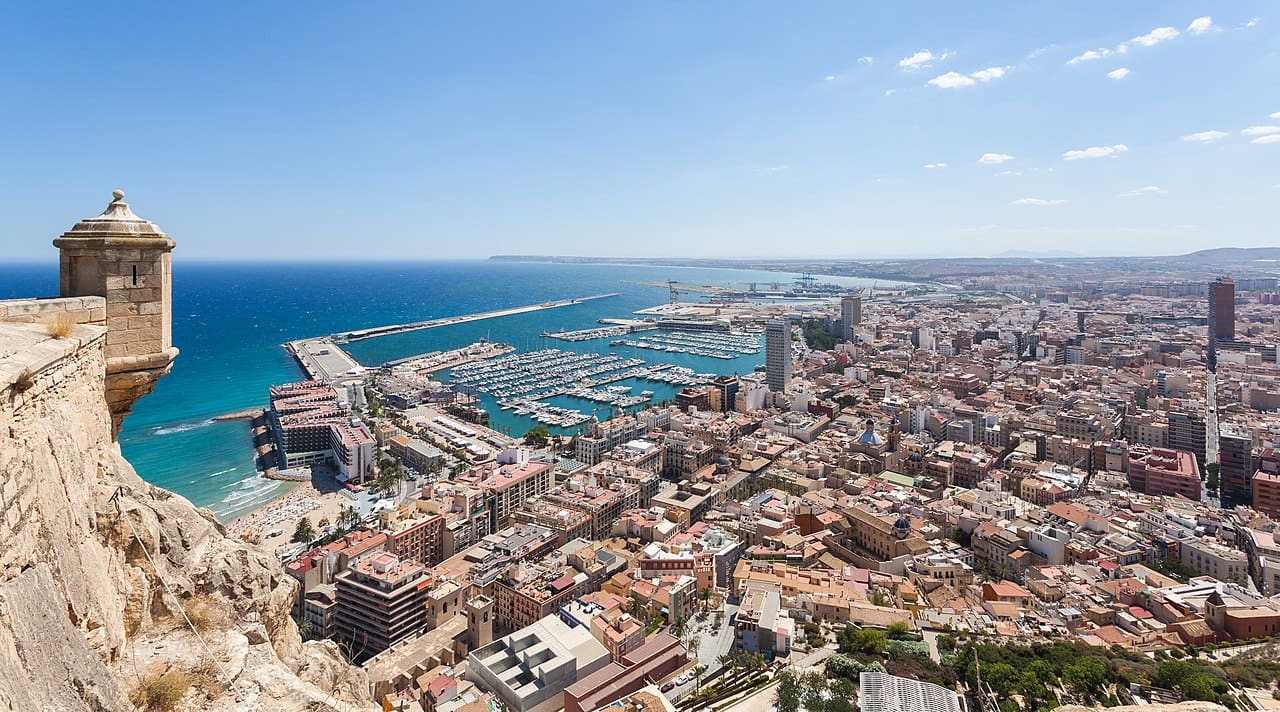
Diego Delso, CC BY-SA 3.0, via Wikimedia Commons
The charming city of Alicante is located on Spain’s sparkling southeast Mediterranean coast. This lively port town is well located along the well-known Costa Blanca, which is adorned with more than 200 km of gorgeous white sand beaches and crystal-clear oceans.
Alicante is situated in a picturesque location where the sea and mountains meet, shielded by the Cordillera Subbética mountain range. Because of its ideal location on the Mediterranean coast, Alicante has grown to become a major seaport for both trade and tourism. It makes sense that tourists swarm to this coastal paradise to enjoy the sun and allure, given its cosmopolitan amenities and perfect environment.
2. Greek Settlers Inhabited the Area in 1000 BC
The Greeks settled in the area they named Akra Leuke in 1000 BC, the settlement where Alicante now stands. The interesting undertone of the city’s ancient origins makes it a live example of the rich cultural fabric created over millennia. Alicante’s Greek background has left a lasting impression that has given the city a certain historical charm that entices people who are curious to learn more about the origins of this alluring seaside resort.
3. Alicante was known as Lucentum during the Roman Period
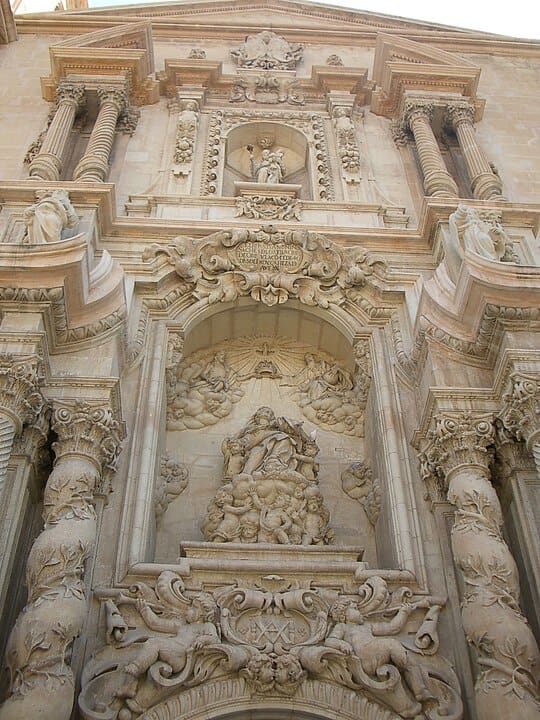
Thomas Dahlstrøm Nielsen, CC BY-SA 4.0, via Wikimedia Commons
Alicante became known as Lucentum during the Roman era and became an important trade hub. This historical account highlights the importance of the city, which at the time was a thriving center of trade and business.
Alicante’s cultural and economic history has been greatly enhanced by the enduring impact of Lucentum’s legacy. As tourists take in the contemporary beauties of the city, they can consider Alicante’s historical background and recognize the long-lasting impact of its position as a major Roman trade center.
4. The City has been Ruled by Several Dynasties over the Years
With periods of administration by the Carthaginians, Romans, Moors, and the Crown of Castile, Alicante’s rich history reads like a fascinating story. The nature of the city has been profoundly shaped by this varied line of rulers, with each age adding to the city’s cultural mosaic.
Alicante’s legacy is a dynamic history of changes from prehistoric societies to medieval conquerors. Visitors can travel through time as they tour the city’s streets and landmarks today, seeing the remnants of Carthaginian, Roman, Moorish, and Castilian influences that have molded this seaside treasure into the exciting destination it is today.
5. The City’s Name is Derived from an Arabic Name
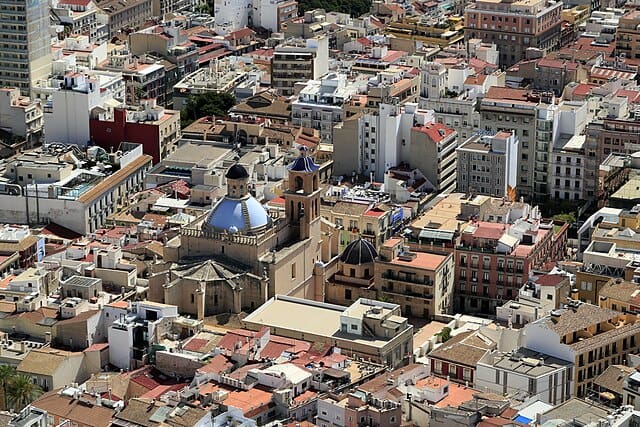
Falk2, CC BY-SA 4.0, via Wikimedia Commons
The name “Alicante” comes from the Arabic “Al-Luqant,” which means “the city of lights.” This language heritage gives the city’s identity a touch of poetic resonance by reflecting its historical ties to Moorish authority.
The name captures the brilliant charm of Alicante, conjuring visions of a city bathed in the light of its rich cultural legacy in addition to the Mediterranean sun. Travelers experience the “city of lights,” Alicante, where charm and history meet in a way that is both alluring and intriguing.
6. Alicante’s Port is One of the Busiest in the Mediterranean Region
The port of Alicante is a vibrant, busy entry point to the Mediterranean that is well-known for its bustle. Known as one of the busiest ports in the area, it is essential to both marine and international trade.
The harbor serves as a hub for both cruise liners and commercial vessels due to its advantageous position and state-of-the-art infrastructure. Alicante’s port is an important maritime hub that promotes economic growth and provides tourists with an exciting waterfront experience in the enthralling Mediterranean setting.
7. Alicante’s Oldest Quarter is the Barrio de Santa Cruz
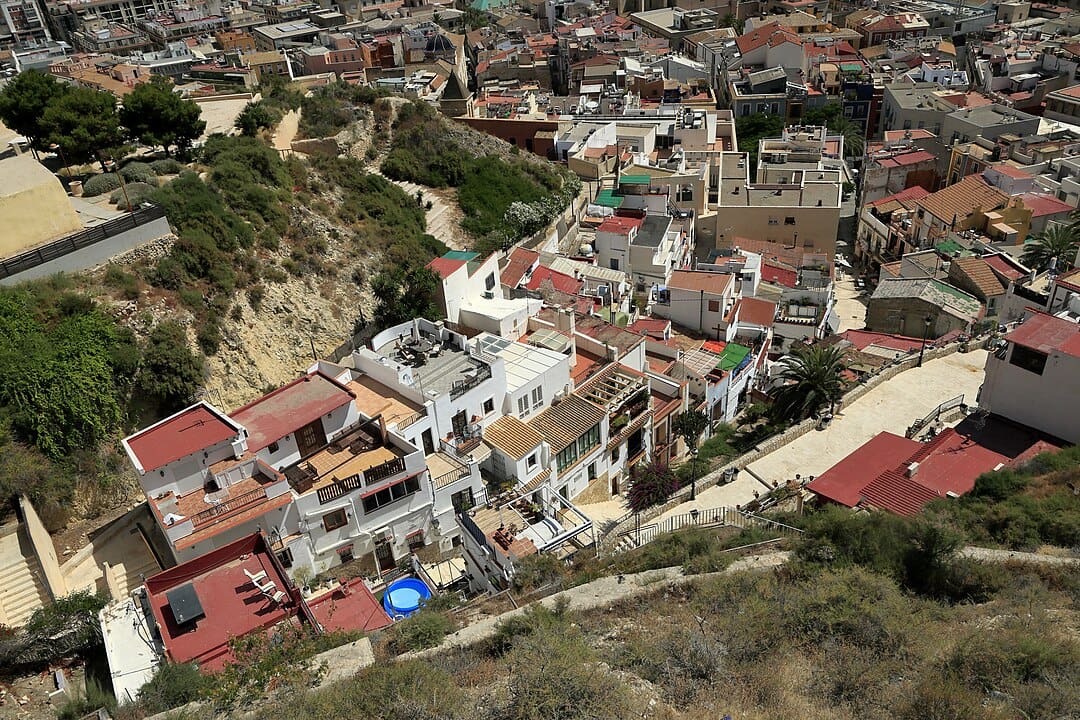
Falk2, CC BY-SA 4.0, via Wikimedia Commons
As the city’s oldest neighborhood, Alicante’s Barrio de Santa Cruz is a historical treasure. Its gorgeous plazas and meandering, narrow alleyways evoke a timeless appeal that transports tourists to another era.
Through this historic neighborhood, cobblestone paths lead visitors to discover hidden nooks and vivid hues that encapsulate Alicante’s colorful past. The building’s style, which combines Spanish and Moorish elements, has a distinctive and alluring feel.
Every square and corner has a story to tell, and you are welcome to stay and enjoy the echoes of bygone eras. Alicante’s cultural legacy is alive and well in the Barrio de Santa Cruz, where history and contemporary life coexist together and provide visitors with a lovely tour through its historic brilliance.
8. Castillo de Santa Bárbara Sits Atop Mount Benacantil, which Entralls Tourists
With its origins dating back to the ninth century, the magnificent Castillo de Santa Bárbara in Alicante is perched atop Mount Benacantil and is a fascinating monument to history. With its formidable appearance, this massive fortress provides unparalleled sweeping views of both the city and the Mediterranean Sea.
Stories of Moorish control, medieval conquests, and cultural development reverberate through the castle’s storied walls. The Castillo de Santa Bárbara, an architectural wonder and a testament to Alicante’s tenacity is a vital component of the city’s rich history.
9. Alicante Enjoys Over 3,000 Hours of Sunshine Annually
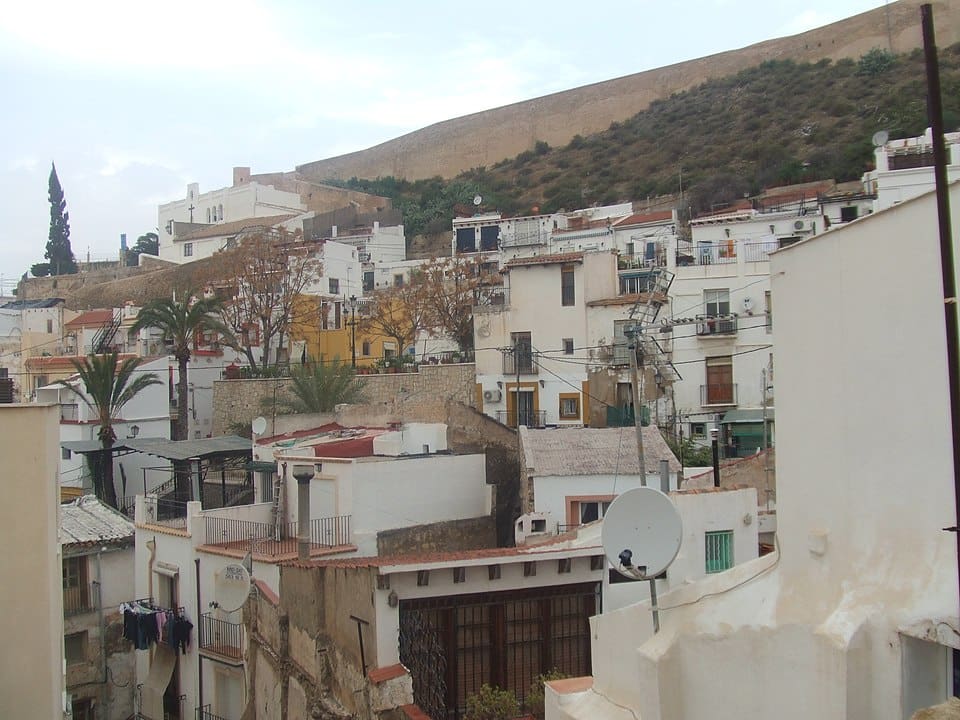
No machine-readable author provided. Misterfanhero~commonswiki assumed (based on copyright claims)., Public domain, via Wikimedia Commons
With more than 3,000 hours of sunshine per year, Alicante is a sun-lovers paradise. This Mediterranean city enjoys almost year-round pleasant weather, with summer highs of 30°C and winter highs of about 20°C. The skies are a brilliant blue, especially in June and August.
While the weather is a major draw for Travellers visiting Spain’s coast, Alicante boasts an unparalleled number of sunny days. The brilliant streets and golden beaches are enhanced with color by the dazzling Mediterranean sunshine, which permeates every minute. Alicante’s position as Costa Blanca’s top sunny destination has been cemented by its pleasant climate, crystal-clear waters, and never-ending sunlight.
10. The Explanada de España is an Iconic Palm Tree Promenade
The famous Explanada de España in Alicante is a charming promenade with mosaic-tiled walkways and a stunning display of palm trees. Stretching along the coastline, this colorful and bustling walkway invites both locals and tourists to stroll amid the rhythmic flutter of palm fronds.
The artistic sophistication of the mosaic patterns underfoot adds to the pleasant ambiance, which is ideal for strolls, get-togethers, and admiring breathtaking vistas. Alicante’s dedication to creating a pleasant urban environment by integrating nature, art, and leisure is evidenced by the Explanada de España.
11. Alicante’s Local Cuisine Boasts of Traces of Arabic and Roman Influence
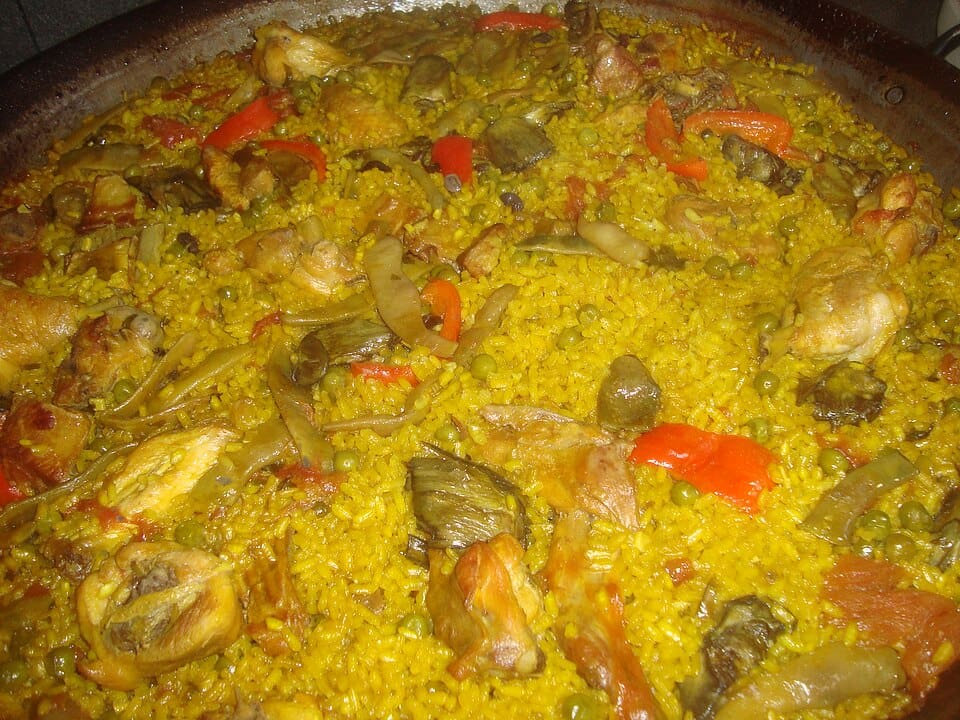
Juan Emilio Prades Bel, CC BY-SA 4.0, via Wikimedia Commons
The rich history of Alicante, shaped by the Arabic and Roman cultures, is reflected in the mouthwatering tapestry of flavors that make up the local cuisine. A celebration of foods like rice, shellfish, almonds, saffron, and olive oil is at the core of this dish. Famous rice dishes from the area, including paella, feature a tasteful fusion of these ingredients.
The Mediterranean Sea and the lush terrain are the sources of the culinary legacy, which offers a wide variety of mouthwatering dishes. Alicante’s cuisine is a delightful exploration of its cultural heritage, a feast that captivates the taste senses with every savory and sweet bite, from savory seafood combinations to desserts filled with almonds.
12. Alicante’s Long Historic Realms are Displayed at the Museo de la Ciudad
Alicante’s Museo de la Ciudad presents artifacts spanning the city’s history from the Bronze Age forward, offering visitors an enthralling trip through time. This cultural treasure trove allows guests to delve into Alicante’s past and discover the history and cultural growth of the region. The museum provides a strong link to Alicante’s past and the amazing stories contained within its historical artifacts, showcasing everything from antiquated antiques to views of daily life in various eras.
13. There are several Colorful Homes and Buildings in El Campello Near Alicante
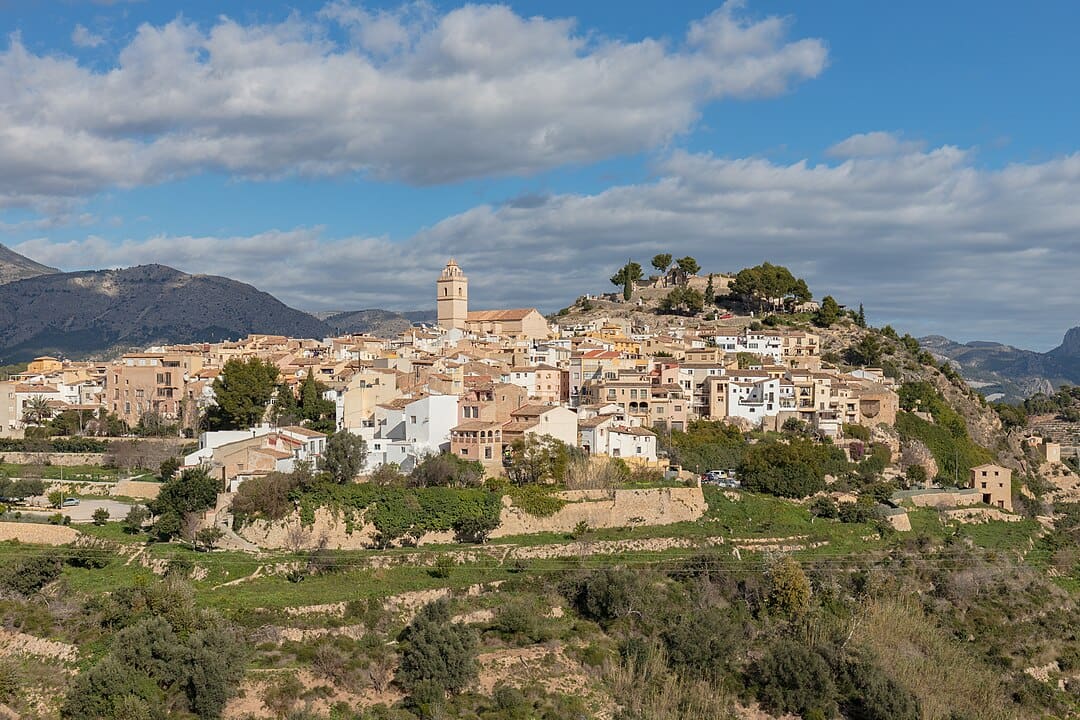
Diego Delso, CC BY-SA 4.0, via Wikimedia Commons
Situated in Alicante, El Campello is a resort town that captivates tourists with its colorful architecture and array of colorful houses. The streets are a gorgeous canvas, embellished with a variety of colors that breathe life into the seaside scenery.
El Campello is a visual feast, with vibrant colors popping out around every corner to create a happy, welcoming atmosphere. The town is further enhanced by this colorful exhibition of architecture, which elevates El Campello to a lively resort that satisfies the senses and embodies coastal living.
14. The Mercado Central Features an Iron Structure Imported from England
The Mercado Central in Alicante is a hive of culinary pleasures that offers a unique historical touch in addition to a wide variety of fresh food and regional specialties. The market is home to a famous iron building that dates back to the 19th century and was brought from England. This architectural wonder, with its elaborate details and Victorian charm, is proof of the city’s international reach.
15. Alicante Celebrates Some of Spain’s Liveliest Festivals
The vibrant festivals in Alicante, which highlight the essence of Spanish culture, make the city pulse with life. Large bonfires illuminate the night as the Fogueres de Sant Joan celebrates the summer solstice with flaming festivities.
Remarkable displays of religious tradition are presented in the streets during Holy Week by elaborate processions. The vibrant and varied cultural landscape of Alicante is strongly reflected in these festivals, which enthrall both inhabitants and visitors in a frenzy of song, dancing, and cultural expression. These events create an unforgettable tapestry of festivities.
16. The City Boasts of Expansive Golden Sandy Beaches
Playa de San Juan is the most famous of Alicante’s many golden sandy beaches, which showcase the region’s coastline splendor. This sun-kissed paradise, which stretches for miles along the azure Mediterranean, entices beach lovers with its fine sands and beautiful waters.
A wonderful getaway may be found in Playa de San Juan, where the sun casts a golden glow over the coastline and rhythmic waves greet the shore. This seaside treasure embodies the charm of Alicante and offers a picturesque haven for people who are ready to take in the splendor of its sun-kissed beaches.
17. Mont Tossal de Loix in Alicante Boasts Extensive Ruins
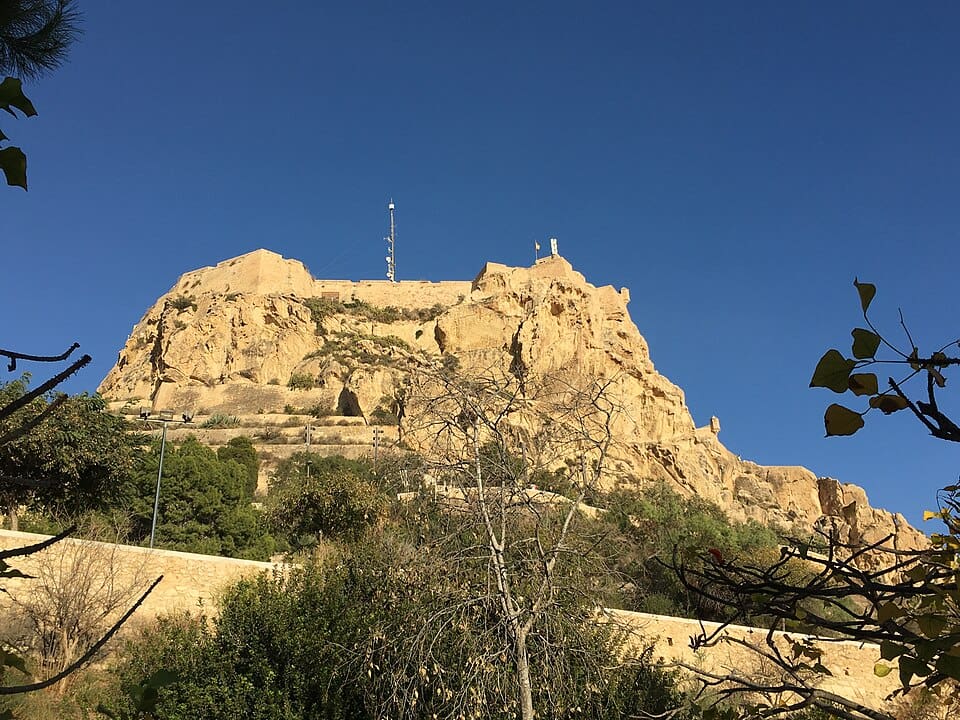
PiotrMig, CC BY-SA 4.0, via Wikimedia Commons
Ruins stretching back to the Roman settlement of Lucentum can be seen on the historical treasure trove known as Mont Tossal d’en Loix in Alicante. The historic ruins provide a window into a former time when Roman influence was strong.
While seeing the remains, tourists can picture daily life in Lucentum and be in awe of the remarkably intact buildings that serve as quiet reminders of bygone eras. The intriguing archaeological site of Mont Tossal d’en Loix offers an enthralling exploration of Alicante’s past, with each stone whispering tales of a period when this region was home to the splendor of Roman culture.
18. Plaza de Toros is a Spectacular Place to Tour in Alicante
Alicante’s Plaza de Toros, a 19th-century bullring rich with history and drama, is a monument to the city’s cultural legacy. This legendary arena, which can accommodate 10,500 spectators, has been the scene of generations of bullfighting spectacle and passion.
It is a must-see monument with magnificent architectural and historical value, where the sounds of fervent spectators and matadors reverberate across time. Beyond the spectacle, the Plaza de Toros invites visitors to investigate the nexus of art, history, and the timeless appeal of this long-standing cultural practice. It provides a window into Spain’s deeply ingrained customs.
19. The Museo Volvo Ocean Race showcases Sailing History
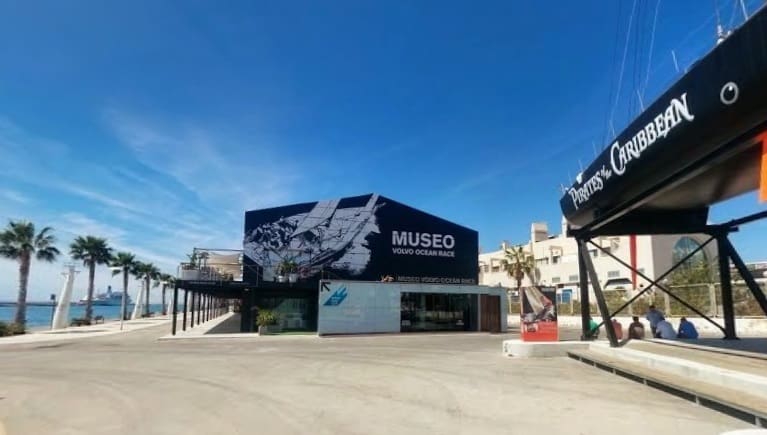
Comandancia, CC BY-SA 4.0, via Wikimedia Commons
The renowned Whitbread Round the World Race and other maritime events are highlighted at the Museo Volvo Ocean Race in Alicante. This enthralling museum gives guests an up-close look at the struggles and victories of these historic maritime contests while immersing them in the exciting world of sailing.
The museum reveals the continuing spirit and excitement of these legendary seafaring adventures, bringing to life nautical tales and offering a fascinating tour through the evolution of sailing. This makes it a must-visit for enthusiasts and inquisitive minds alike.
20. Alicante Enjoys a Lively Nightlife Scene
Alicante comes to life after dark, presenting a lively and energetic nightlife scene. Numerous bars and clubs, each with a distinct vibe and selection of music, line the city’s streets, appealing to a wide range of tastes. Alicante offers night lovers a vibrant playground with everything from vibrant coastal venues to stylish city center locations.
Additionally, restaurants that open late entice you to continue celebrating long into the morning hours. Alicante is a popular destination for anyone looking for exciting nightlife, whether they’re looking for a laid-back evening or an all-night dance party. The city’s nightlife guarantees an amazing experience.
21. Alicante has been an Important Commercial and Tourist Hub for Centuries
Over the years, Alicante has developed into a major center for commerce and tourism. The city’s economic significance has been bolstered by the ease of marine trade made possible by its strategic location along the Mediterranean Sea.
Alicante is still the starting point for the Costa Blanca today, drawing visitors with its golden beaches, cultural landmarks, and lively vibe. This pivotal point in history connects the past and the present, encapsulating a vibrant blend of trade and tourism that has shaped Alicante’s lasting place in the fabric of Spanish coastal culture.
22. Alicante Boasts of Incredible Local Delicacies
Alicante’s culinary offerings are as varied as its past. One of the region’s specialties is the famed Benacantil artichokes, which are picked fresh from the slope. Tiger nuts and cuttlefish stew are examples of Moorish-influenced cuisine.
Additionally, peladillas, sweet cookies flavored with anise, are a prime example of Spanish confectionery customs. Produced both on land and in the water, Alicante cuisine captures the depth of its culture at a crossroads. Locals take great pride in their distinctive cuisine, which honors long-standing customs and the unique terroir of the area.
23. Visit the Barrio de la Santa Cruz in Alicante
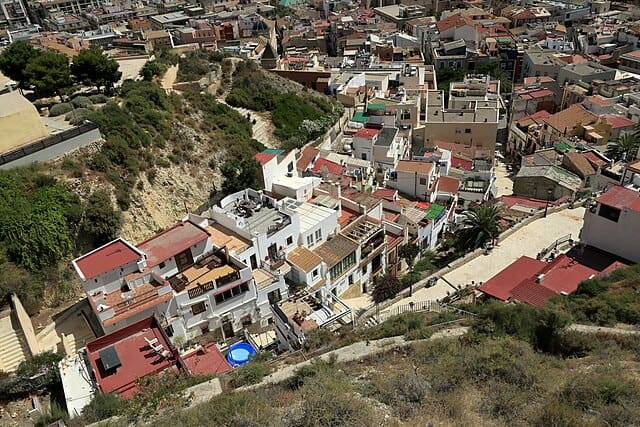
Falk2, CC BY-SA 4.0, via Wikimedia Commons
Enter the Barrio de la Santa Cruz and experience a historical journey. The oldest portion of Alicante is located in this evocative area, which dates back to the fourteenth century. Wander through colorful, winding streets and take in the charming homes with their terracotta, blue, and yellow paint jobs.
See picturesque balconies and squares full of flowers above you. Repurposed historic homes are now charming little stores with handcrafted goods, ideal for leisurely perusing. It is understandable why this neighborhood is still one of Alicante’s most cherished because of all the beauty and character that are crammed into its narrow lanes. The Santa Cruz neighborhood provides a glimpse into the past of the Middle Ages for tourists.
24. Reach the Island Castle of Isla de Tabarca from Alicante via Ferry
The charming Isla de Tabarca, capped by its island castle, is revealed after a quick ferry ride from Alicante. With its turquoise waters and antique charm, this Mediterranean refuge is a paradise steeped in history.
A magnificent reminder of the island’s history, the castle is a striking landmark. Isla de Tabarca is a great getaway for people looking for a combination of history and natural beauty, only a short boat ride from Alicante. Exploring it is like taking a trip through time, with sea breezes carrying whispers of centuries past.
25. There are Several Museums in Alicante
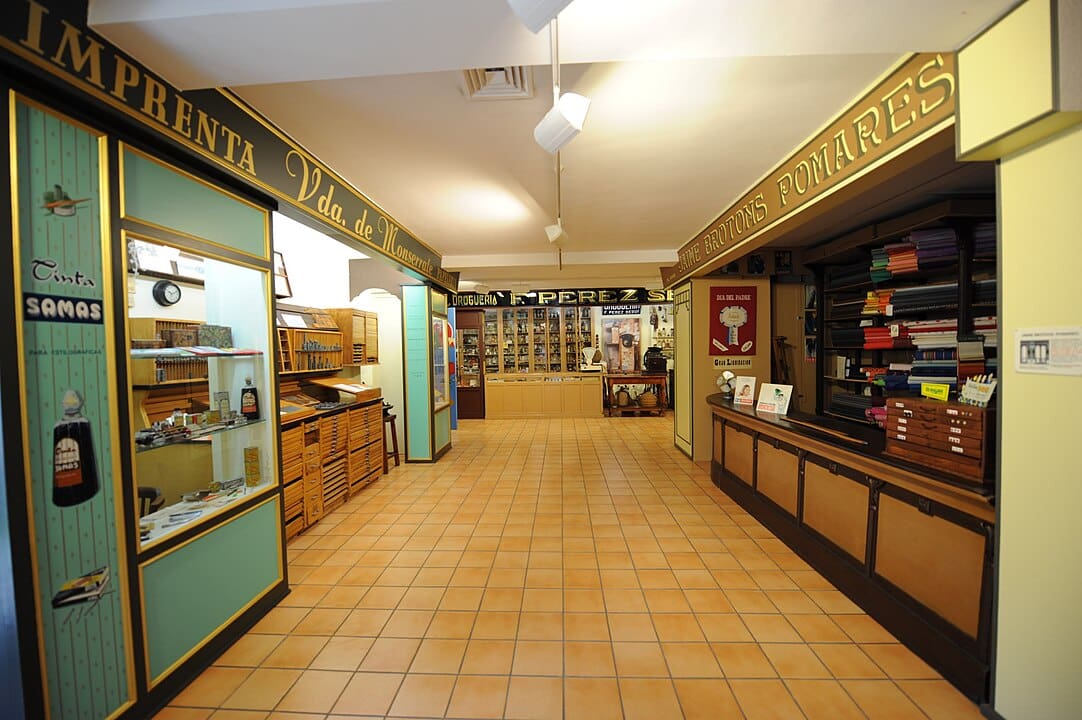
Museo Escolar de Pusol, CC BY-SA 3.0, via Wikimedia Commons
Beyond its beaches bathed in sunlight, Alicante is known for its varied museums that showcase its rich cultural mosaic. Art enthusiasts can enjoy the creations of regional and worldwide artists at places such as the Museo de Arte Contemporáneo. The Museo de la Ciudad explores the past of Alicante, taking visitors on a historical journey.
A museum dedicated to maritime adventure is the Museo Volvo Ocean Race. Alicante offers a wide range of fascinating cultural experiences, from the rich traditions portrayed in the Fogueres Museum to the archaeological marvels at Mont Tossal d’en Loix. For inquisitive minds, these museums serve as windows into the past, present, and creative spirit of the city.
26. Roman-era Alicante Relics were Unearthed at the Lucentum Archaeological Site
The archaeological site of Lucentum, located in Alicante offers an enthralling window into the Roman world. Remains that have been unearthed include remarkably intact bathhouses, temples, and other buildings that offer important insights into ancient daily life.
The historical significance of Lucentum is emphasized by the finds made there, which also provide insight into the advances made by Roman civilization in Alicante’s architecture and culture. This archaeological project is evidence of the careful preservation of the past and the continuous efforts to solve the mysteries surrounding our rich cultural heritage.
27. Santa Maria Basilica is an Amazing 14th Century Gothic Church in Alicante
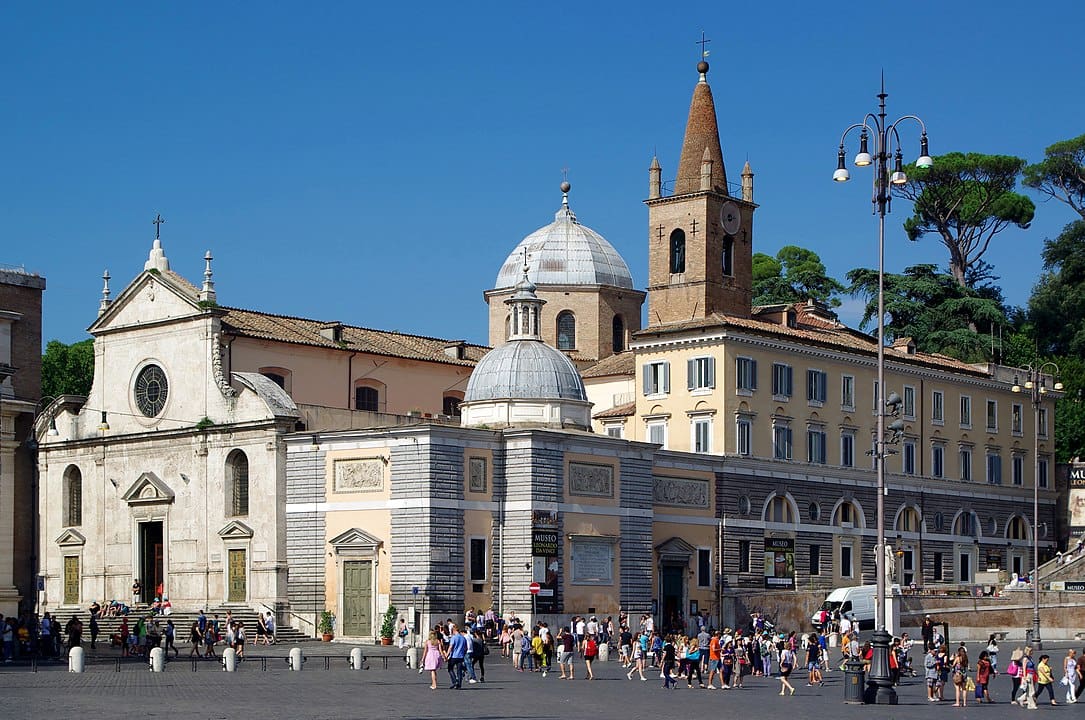
Jakub Hałun, CC BY-SA 4.0, via Wikimedia Commons
The Gothic masterpiece Santa Maria Basilica, which dates to the fourteenth century, is a symbol of the persistence of architecture. The construction of this magnificent church, which is situated in the city began more than 200 years ago.
The Santa Maria Basilica’s elaborate architecture and fine craftsmanship are a testament to the labor of many craftsmen and builders. The basilica, with its towering spires and elaborate embellishments, is not only a place of worship but also a magnificent example of art and history that has weathered the test of time.
28. The City has its own Satisfactory Micro-climate
Due to its distinct microclimate, Alicante provides both locals and tourists with a pleasant mix of weather conditions. The city enjoys a moderate and pleasant temperature because it is tucked away within the bay’s encircling mountains.
Alicante enjoys pleasant summers and moderate winters, protecting it from harsh weather and fostering a welcoming atmosphere all year round. This area is blessed geographically, which adds to its charm and makes it a great place to visit for people looking for a harmonious blend of the cool mountain air and the Mediterranean’s intense heat.
29. Top-Level Sporting Events are Held in Alicante

Harpagornis, CC BY-SA 4.0, via Wikimedia Commons
Alicante has traditionally been a thriving center for major athletic events. The city regularly hosts tournaments that highlight its skills in sports, such as the Spain Rally Championship qualifiers.
Both players and spectators will find an exciting backdrop thanks to the well-planned circuits and picturesque settings. Alicante’s dedication to organizing major athletic events gives its cultural mosaic a thrilling new dimension that attracts sportsmen and enthusiasts from all over the world to join in the exhilarating celebrations.
30. Alicante has the Second-largest Population in the Valencian Community
Nestled in the Valencian Community, Alicante is a coastal beauty that is the second-largest city in the region in terms of population. Beyond its breathtaking views of the Mediterranean, Alicante’s attractiveness lies in its diverse and expanding society.
Its ranking as the second most populous city highlights the vibrancy of the city’s metropolitan environment and diversity of culture. Alicante’s prosperous seaside enclave continues to draw both inhabitants and tourists with its unique blend of modern conveniences and historical charm.
Alicante is a true hidden gem along the well-known Costa Blanca, with its breathtaking beaches, sunny climate, intriguing history and architecture, mouthwatering food, and lively culture. This Mediterranean resort is often disregarded, but it offers travelers a wealth of experiences and exploration opportunities. The richness, diversity, and appeal of Spain’s breathtaking coastline are perfectly captured in Alicante.
Planning a trip to Paris ? Get ready !
These are Amazon’s best-selling travel products that you may need for coming to Paris.
Bookstore
- The best travel book : Rick Steves – Paris 2023 – Learn more here
- Fodor’s Paris 2024 – Learn more here
Travel Gear
- Venture Pal Lightweight Backpack – Learn more here
- Samsonite Winfield 2 28″ Luggage – Learn more here
- Swig Savvy’s Stainless Steel Insulated Water Bottle – Learn more here
Check Amazon’s best-seller list for the most popular travel accessories. We sometimes read this list just to find out what new travel products people are buying.

